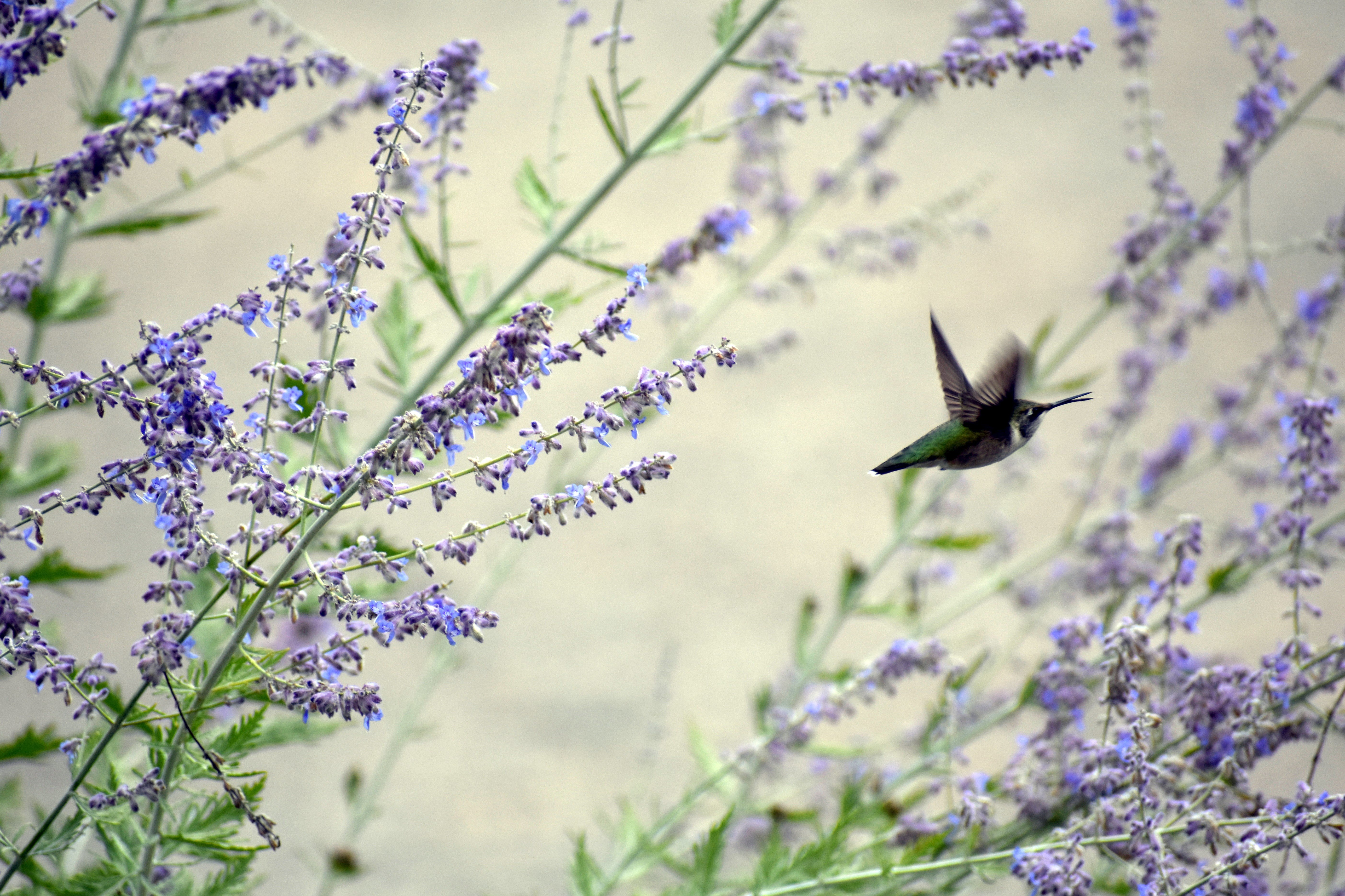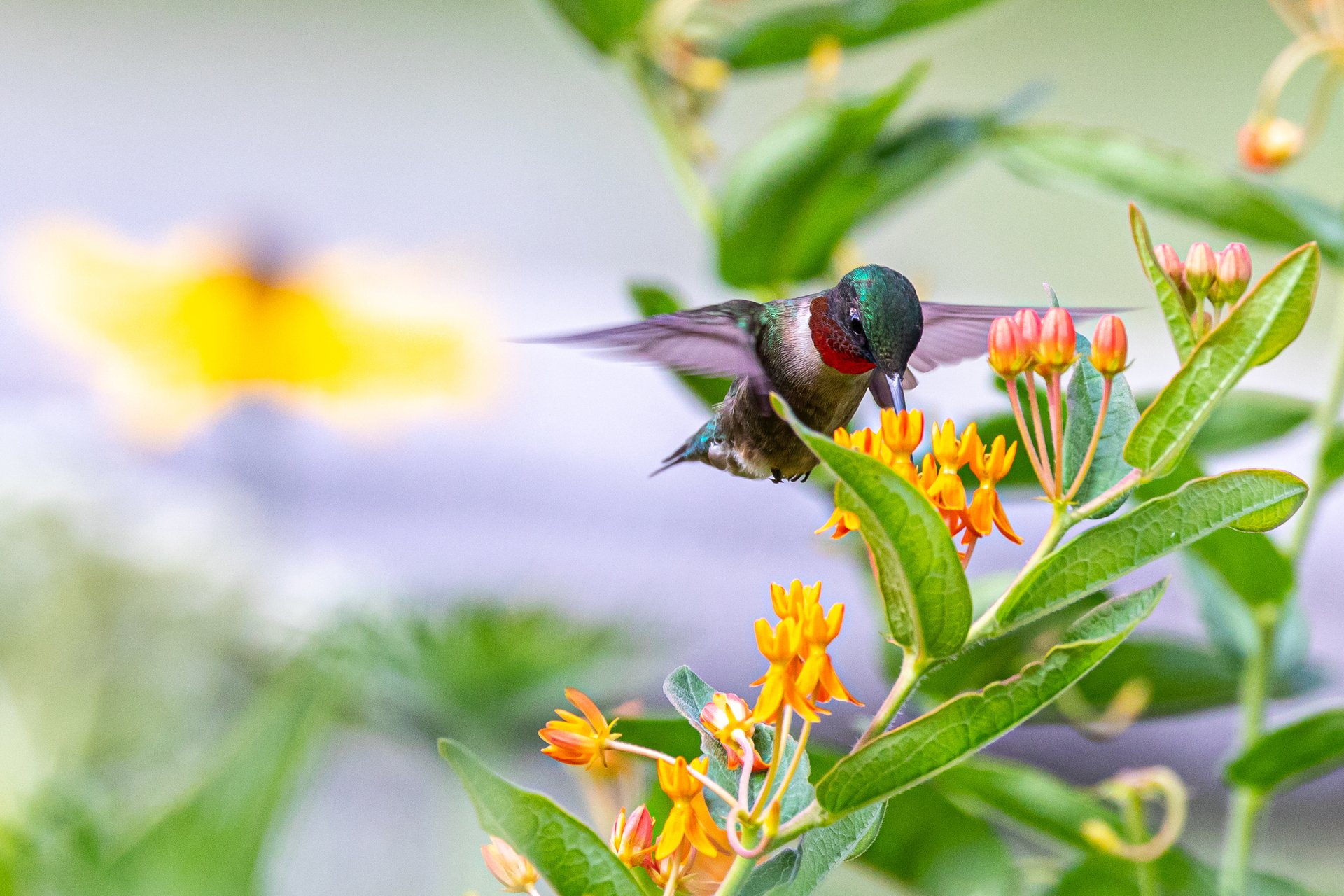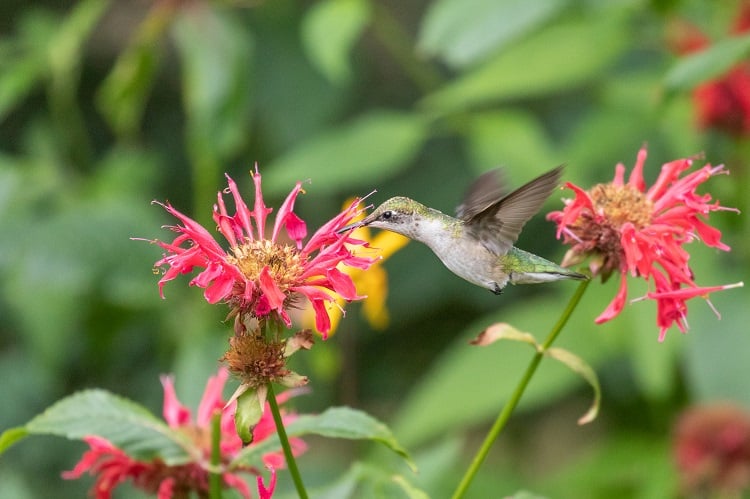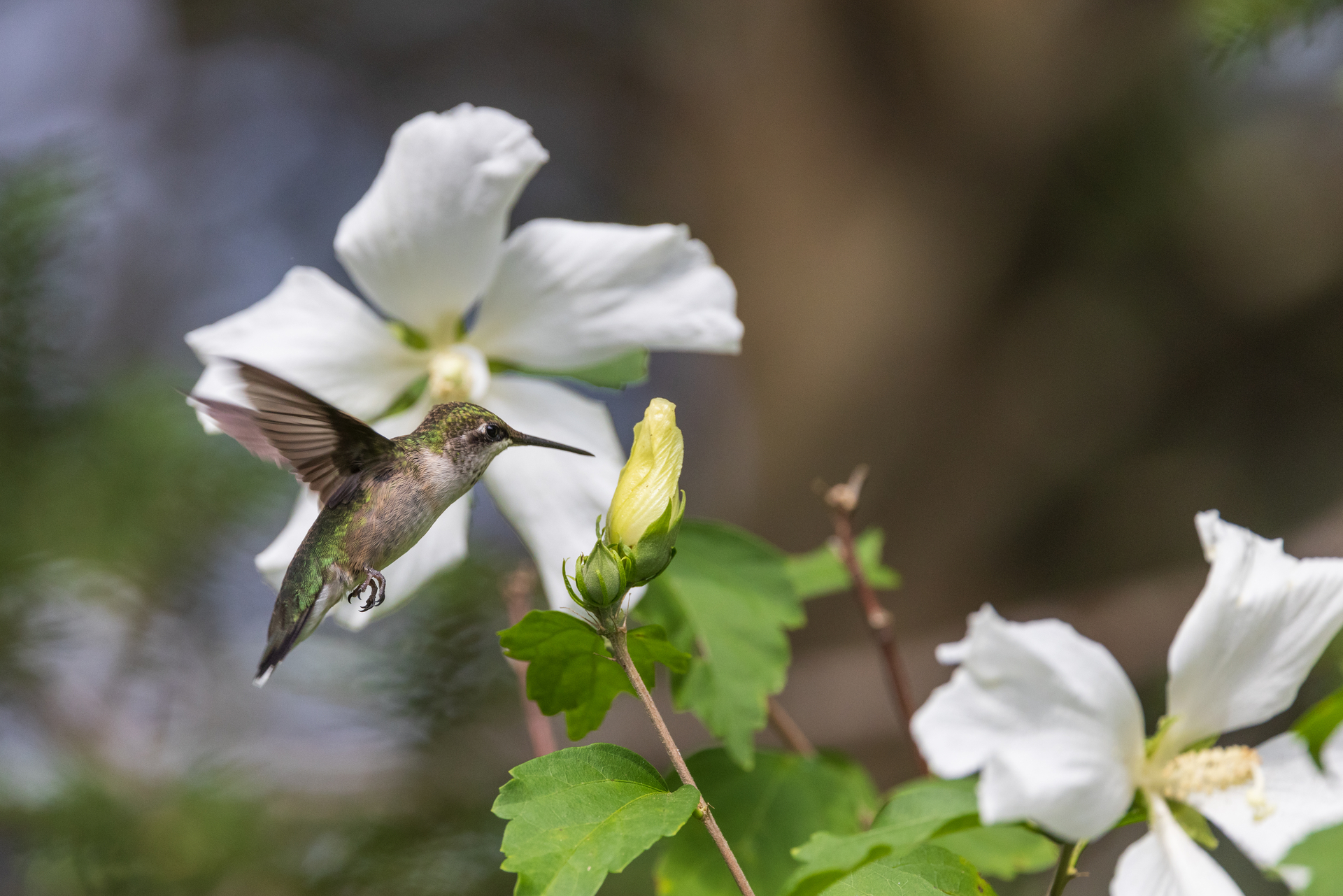Birds in Massachusetts
Ruby-throated Hummingbirds
Massachusetts' smallest breeding bird is also one of our most beautiful. The male Ruby-throated Hummingbird is unmistakable, with glossy green feathers above and a stunning gorget that glitters like its namesake.
Even the females are easily identified, for this species is the only hummingbird that commonly appears in Massachusetts.
Ruby-throated hummingbird is the only hummingbird that nests in the eastern United States. There are a few others that can occur in extremely small numbers in the late fall, but they are really rare.
How to Identify Ruby-throated Hummingbirds
Ruby-throated hummingbirds are small, vibrant birds with distinctive features that make them easily recognizable. Adult males have a brilliant iridescent green back and crown, with a vibrant ruby-red throat patch that shimmers in the sunlight. Their underparts are a crisp white, contrasting sharply with the green upperparts. In flight, their wings beat rapidly, creating a distinct buzzing sound. Females lack the vibrant throat patch and have a more subdued greenish-gray plumage overall. Both have long, slender bills perfectly adapted for sipping nectar from flowers.
Ruby-throated Hummingbird Behavior
The ringing/buzzing noise you hear from ruby-throated hummingbirds as they fly by is from their wings, which beat about 53 times per second. The twittering sound (often when they are acting territorial) is from their throat.
Nests are made with fibers and lichens held together with spider webs.
Hummingbirds in Torpor
Ruby-throated hummingbirds burn energy so quickly, they must consume more than their own weight in insects and nectar every day to stay alive. To stay alive in adverse conditions when no food can be found hummingbirds can enter a special state called torpor, similar to what we term hibernation in mammals, in which their metabolism slows down tremendously. A hummingbird in torpor is almost impossible to awaken!
Ruby-throated Hummingbird Call
Frequently Asked Questions About Hummingbird Feeders
Ruby-throated Hummingbirds are favorites of backyard birders, and hummingbird feeders are a popular addition to your backyard ecosystems.
Best time to put feeders out is the last week of April or the first week of May.
Red dye in the nectar in hummingbird feeders is not beneficial or harmful—but you don’t need it. Actually, the color of the nectar is not important, but the color of the feeding port is what attracts the hummingbird, most feeders are red. The myth that the red dye may be harmful has never been proven in any published studies.
To make your own nectar, combine 4 parts boiling water to 1 part refined white sugar. Never use unprocessed sugars as they can be harmful to hummingbirds. Let it cool before you refill the feeder and put it out.
Feeders need to be cleaned at least each week. Cleaning more frequently is easier (no mold grows) and probably better for the birds. Choosing feeders that are easy to clean is good, too.
Don’t worry! Adults eat both nectar and insects, sometimes they will lap up the ants—sort of a surf & turf meal.
Great plants to attract hummingbirds to your garden include: bee balm (Monarda), native honeysuckle vine (Lonicera sempivirens), or pink turtlehead (Chelone lyonii). These perennials are easy to grow and look great together. You could also add some bright colored annuals—phlox, salvia, snapdragon, or fuchsia, for example—to ensure a good assortment of blooms throughout the season.
A hummingbird will migrate even if you do not take down your feeders in the fall. All birds that migrate, including hummingbirds, do so according to a genetic predisposition. The timing of migration is most likely triggered by the length of the day, and not the availability of food. A bird which fails to migrate, due to injury, illness, or genetic miswiring may be seen at feeders off season only because of the available food there. Leaving feeders up in really cold weather can injure the hummingbird’s bill—it is rare, but still nothing you want to have happen. With this in mind it is best to take the feeders down before freezing nights become common.
How Mass Audubon is Supporting Birds in Massachusetts
Mass Audubon works at our wildlife sanctuaries and beyond to ensure that the nature of Massachusetts continues to thrive. By scientifically monitoring Massachusetts birdlife, Mass Audubon informs important conservation decisions and launches targeted initiatives to help at-risk species. In addition, fostering healthy habitats, supporting native species, and educating people about the importance of nature conservation is critical to our success. Learn more about our work
How You Can Support Birds in Massachusetts
Mass Audubon supports birds like the Ruby-throated Hummingbird every day, but we couldn’t do it without the support of our 160,000+ members.
Help support Ruby-throated Hummingbirds, and birds like them, by becoming a member today.
Upcoming Programs on Birds
See MoreOwl Prowl
-
Felix Neck Wildlife Sanctuary, Edgartown
-
Friday, December 12
4:45-5:45pm
Adults & Families - 0 - 17
Early Winter Bird Walk
-
Broadmoor Wildlife Sanctuary, Natick
-
Saturday, December 13
8:00-10:00am
Adults
In Search of Winter Waterfowl - Freshwater Habitats
-
Saturday, December 13
9:00-11:00am
Adults
Stay Connected
Don't miss a beat on all the ways you can get outdoors, celebrate nature, and get involved.






